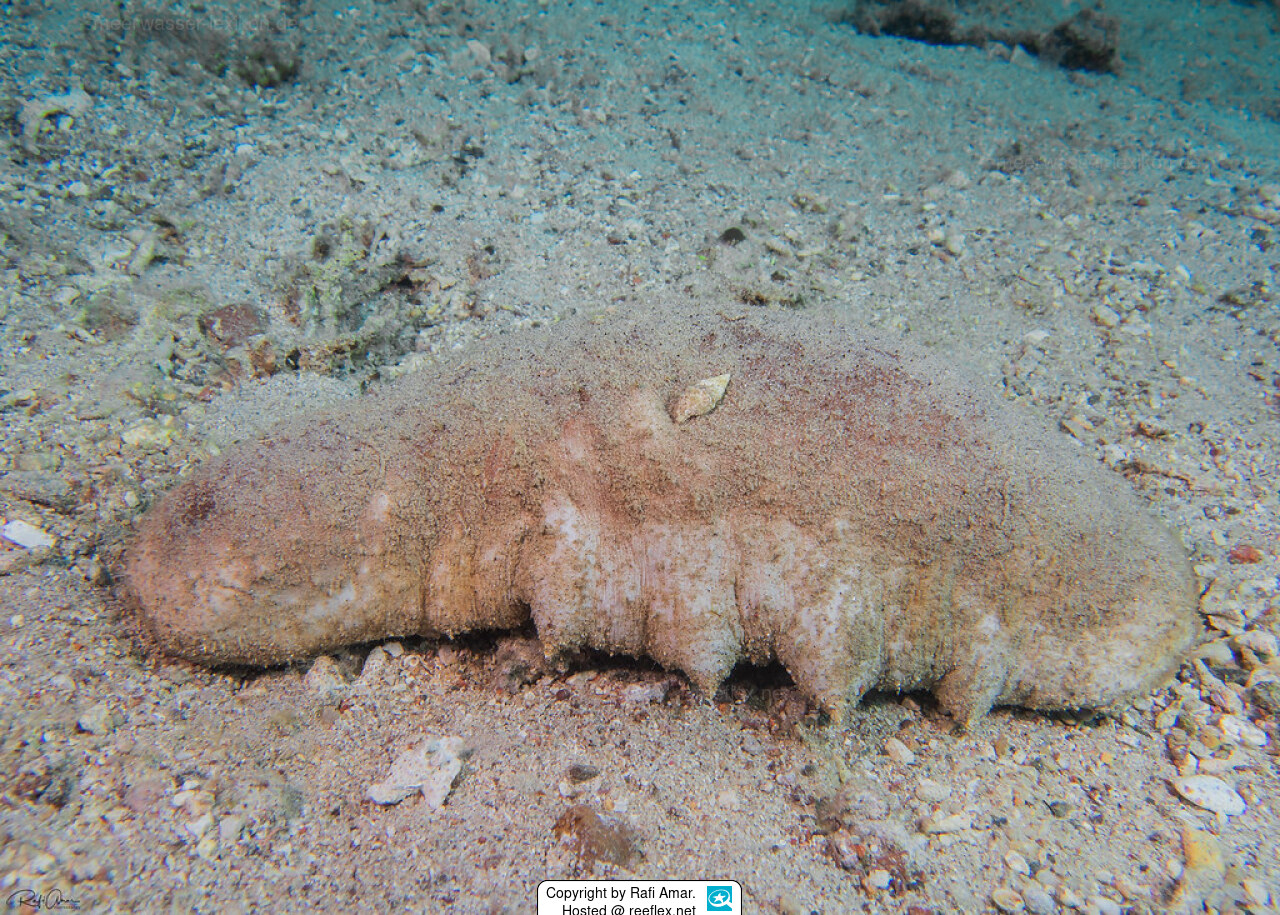Info
Holothuria (Microthele) fuscogilva Cherbonnier, 1980
Holothuria fuscogilva are found in the Indo-Pacific ocean in shallow waters near islands and around coral reefs. Juvenile cucumbers live in shallower waters (such as inter-tidal zones) and then migrate to deeper waters as they mature.
Spawning occurs during the Northeastern Monsoon season (October to December), and the species reaches sexually maturity relatively late.
The White Teatfish occurs on outer barrier reefs and passes, fore reef slopes, but also known to inhabit shallow seagrass beds.
Synonymised names:
Holothuria fuscogilva Cherbonnier, 1980 · alternate representation
Sea cucumbers of the family Holothuriidae possess, exceptions confirm the rule, so-called Cuvier's tubes (named after the French naturalist Georges Cuvier, * August 23, 1769 † May 13, 1832).
These are long, thin tubes that are located on the rectum of the echinoderms and are flung towards potential predators for defense.
These released tubes form a sticky, tough and stretchy network in which fish, crustaceans or other prey predators can become entangled.
The adhesives may also contain toxins (holothurin).
Sea cucumbers are the vacuum cleaners of the oceans, continuously cleaning the sea floors, so it may be useful for aquarists to keep one or more sea cucumbers in the aquarium to avoid detritus rich zones.
Problem:
Many sea cucumbers of the family Holothuriidae can release their venom into the aquarium water when they are in danger or dying, corals are mostly not harmed by the venom, but fish usually die.
Holothurins can cause severe, burning pain when in contact with the skin and irritation and even blindness when in contact with the eyes. When ingested systemically, the toxins can cause paralysis, muscle spasms, and discomfort in the digestive system, and in larger quantities, death by respiratory paralysis.
Since sea cucumbers are considered a delicacy in many Asian countries, the Cuvier's tubes containing the toxins must be removed before preparation or consumption.
Holothuria fuscogilva are found in the Indo-Pacific ocean in shallow waters near islands and around coral reefs. Juvenile cucumbers live in shallower waters (such as inter-tidal zones) and then migrate to deeper waters as they mature.
Spawning occurs during the Northeastern Monsoon season (October to December), and the species reaches sexually maturity relatively late.
The White Teatfish occurs on outer barrier reefs and passes, fore reef slopes, but also known to inhabit shallow seagrass beds.
Synonymised names:
Holothuria fuscogilva Cherbonnier, 1980 · alternate representation
Sea cucumbers of the family Holothuriidae possess, exceptions confirm the rule, so-called Cuvier's tubes (named after the French naturalist Georges Cuvier, * August 23, 1769 † May 13, 1832).
These are long, thin tubes that are located on the rectum of the echinoderms and are flung towards potential predators for defense.
These released tubes form a sticky, tough and stretchy network in which fish, crustaceans or other prey predators can become entangled.
The adhesives may also contain toxins (holothurin).
Sea cucumbers are the vacuum cleaners of the oceans, continuously cleaning the sea floors, so it may be useful for aquarists to keep one or more sea cucumbers in the aquarium to avoid detritus rich zones.
Problem:
Many sea cucumbers of the family Holothuriidae can release their venom into the aquarium water when they are in danger or dying, corals are mostly not harmed by the venom, but fish usually die.
Holothurins can cause severe, burning pain when in contact with the skin and irritation and even blindness when in contact with the eyes. When ingested systemically, the toxins can cause paralysis, muscle spasms, and discomfort in the digestive system, and in larger quantities, death by respiratory paralysis.
Since sea cucumbers are considered a delicacy in many Asian countries, the Cuvier's tubes containing the toxins must be removed before preparation or consumption.







 Rafi Amar, Israel
Rafi Amar, Israel


































